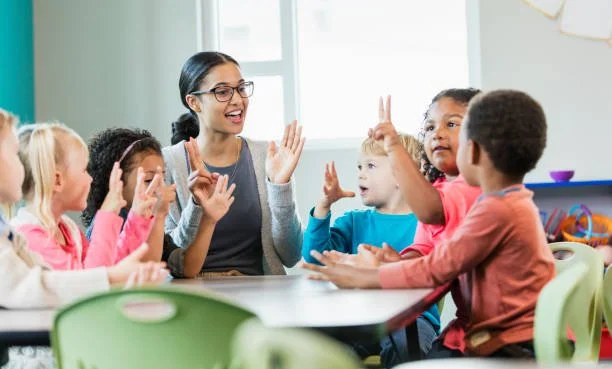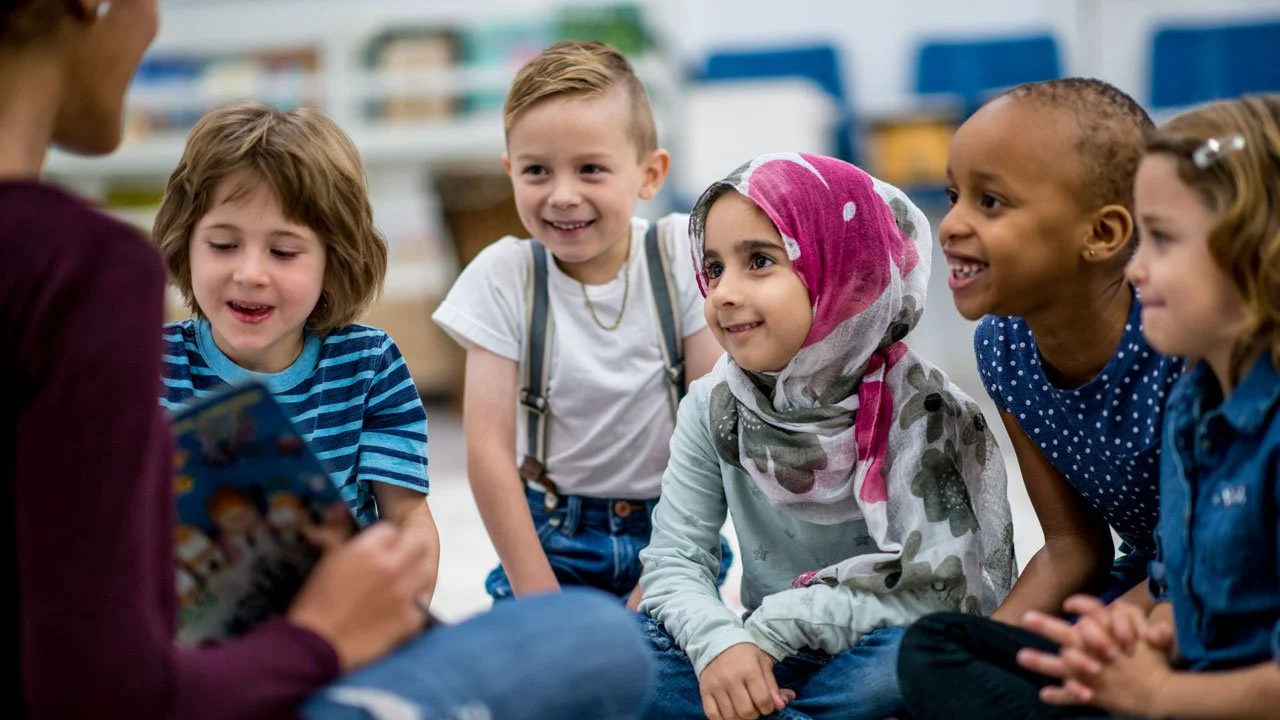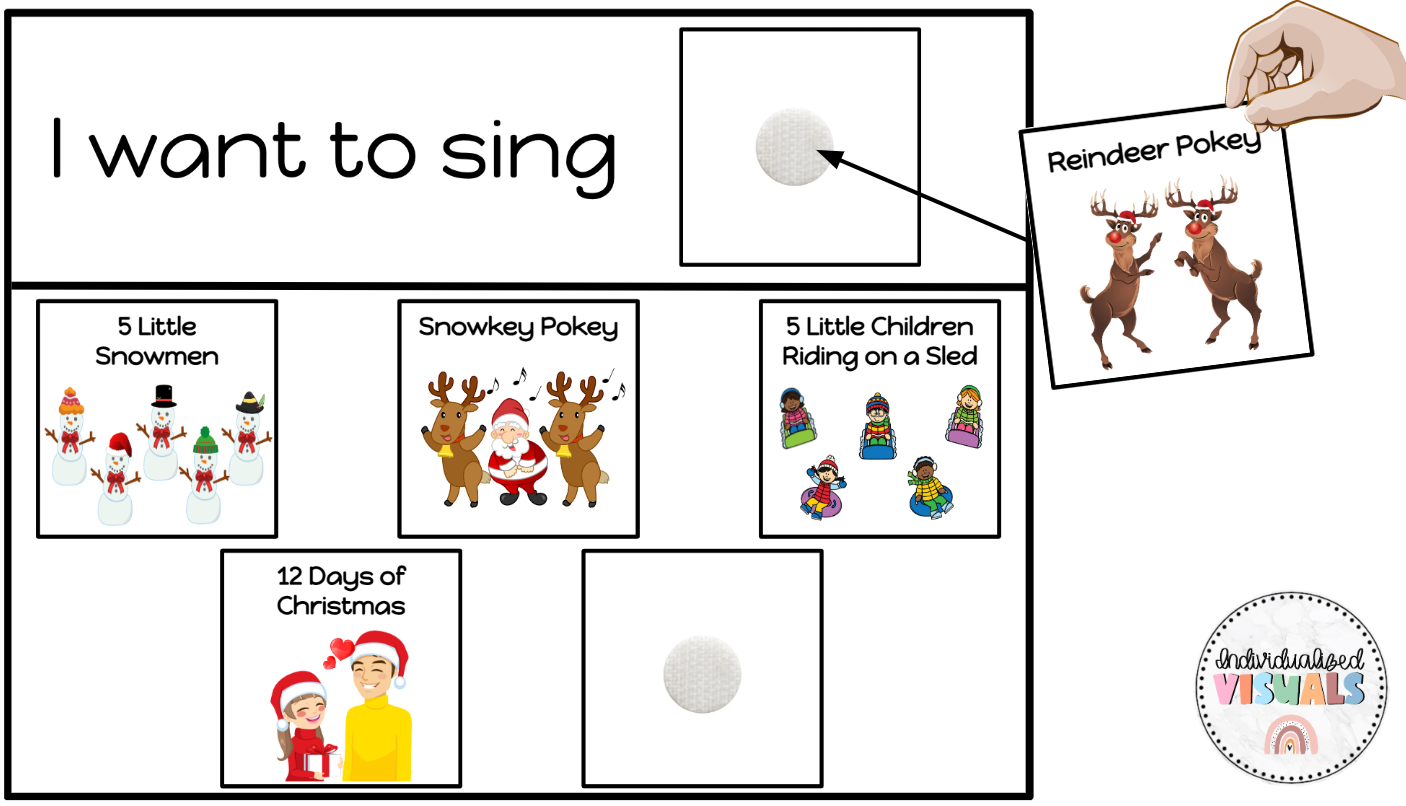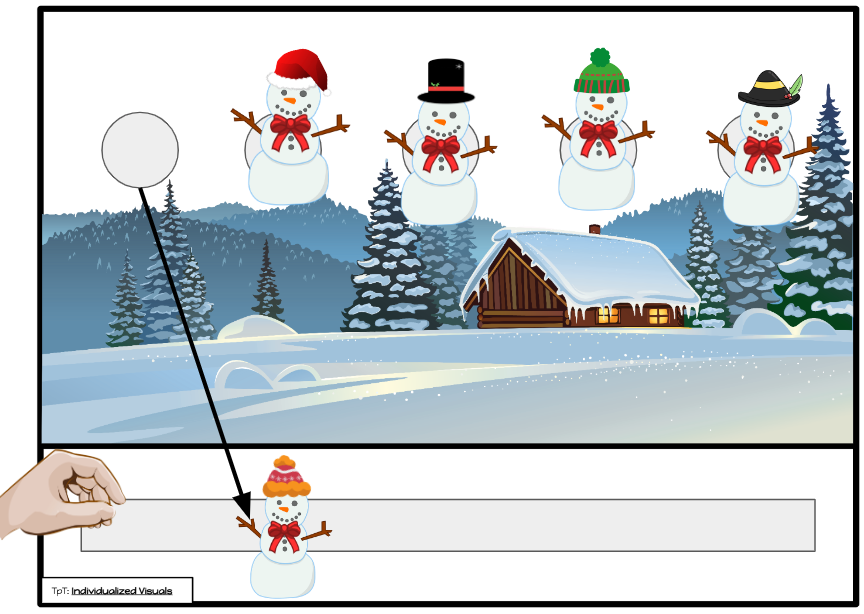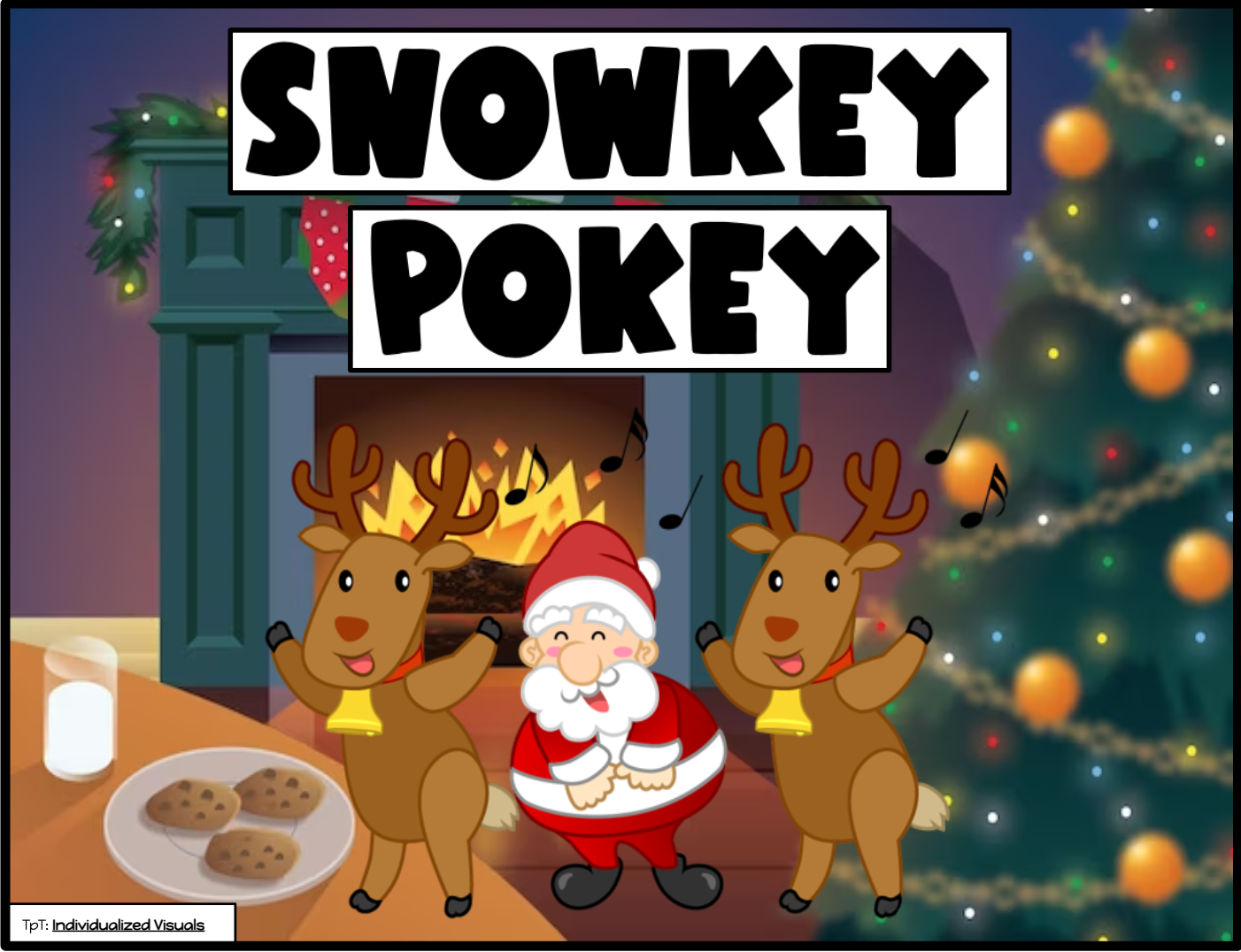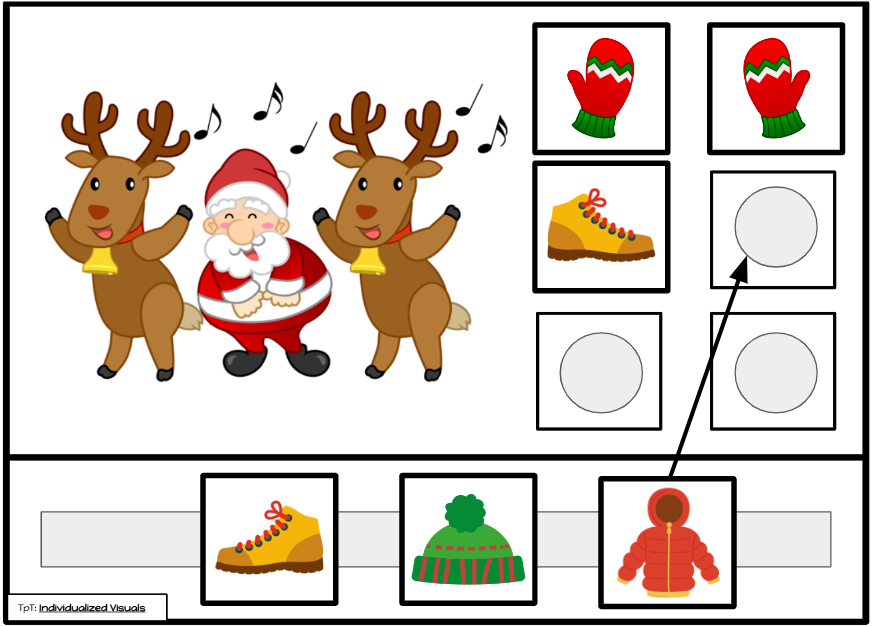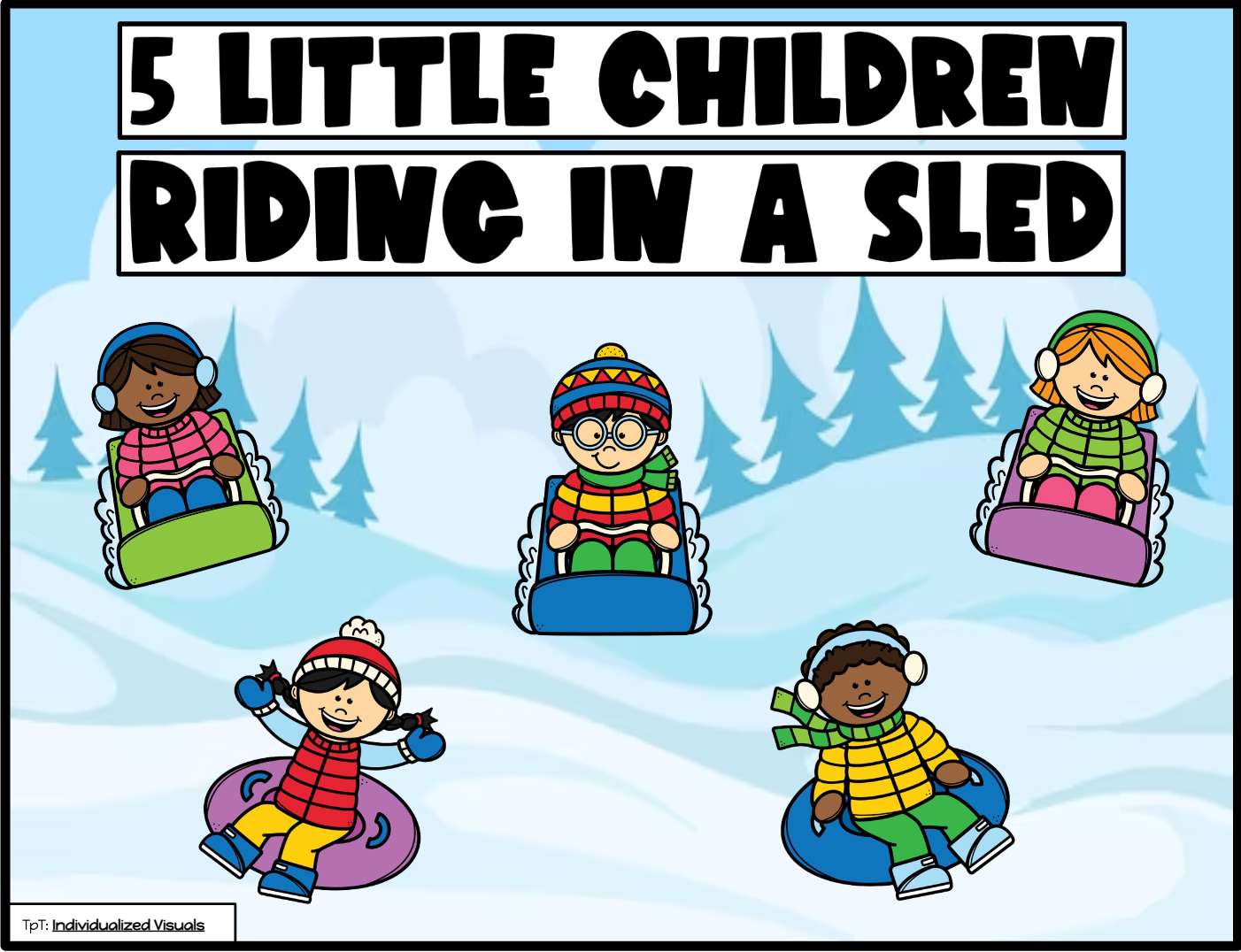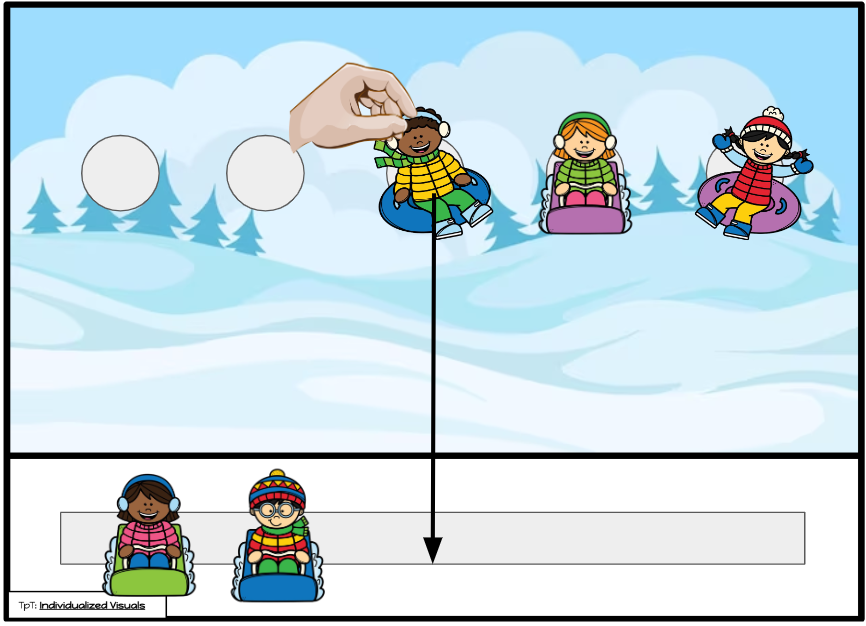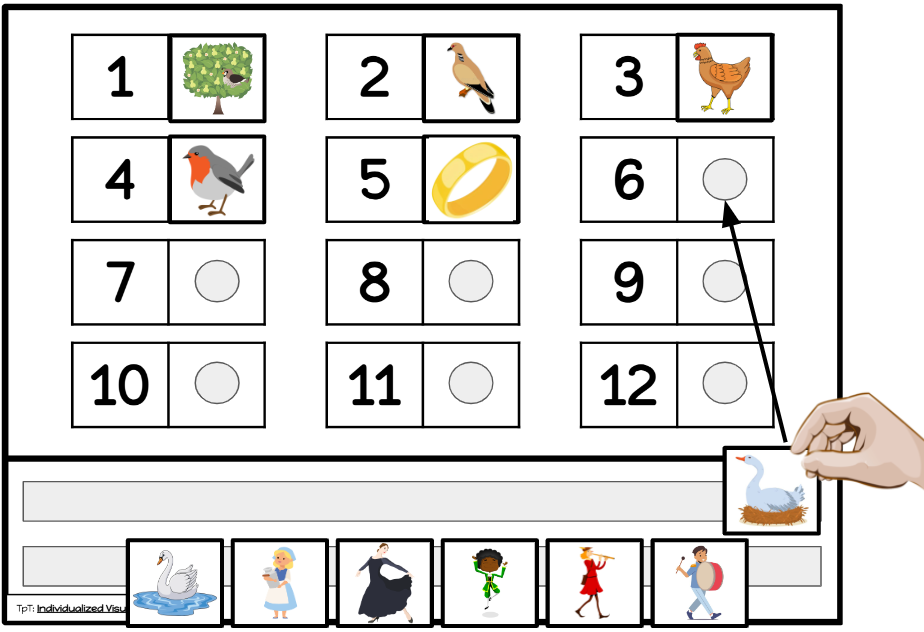Song boards for Circle Time - Holiday Christmas Carol Songs
What is Circle Time or Music Circle?
Everyone has had fond memories of Circle Time especially for preschool and kindergarten classes, but they are also great for Special Education, Autism Classrooms, Early Childhood Education or Kindergarten Classrooms. Circle time in special needs classes refers to a structured and routine gathering of students and teachers in a circular or semicircular arrangement.
The purpose of circle time is to create a positive and inclusive environment where students can participate in various activities that promote social, emotional, and cognitive development. Sing-a-long music circles creates an open opportunity for important social interactions, movement breaks, and building vocabulary. In special needs classrooms, routine provides needed structure and predictability of the day. So incorporating circle time in the morning routine helps slowly transition the student before harder work tasks are introduced afterwards. If music and singing is a preferred activity for the students, then it also creates a calming and welcoming environment.
Components of Circle Time
During circle time in special needs classes, teachers often engage students in activities such as:
Greetings: Students may take turns greeting each other, fostering social interactions and communication skills.
Sharing: Students may have the opportunity to share something about themselves, their experiences, or items they have brought with them. This helps improve communication and social skills.
Songs and Movement: Teachers may incorporate music and movement activities into circle time to enhance gross motor skills and provide a sensory-rich experience.
Story Time: Reading stories aloud can be an essential part of circle time. Teachers may use books with simple language, visual supports, or interactive elements to engage students in the storytelling process.
Calendar Activities: Incorporating a calendar and discussing the day, date, weather, and upcoming events can help students understand and anticipate the routine.
Turn Taking: Teachers may include opportunities that encourage turn-taking, sharing, and cooperation.
Reviewing Expectations: Circle time is an opportunity to review expectations for behavior and communication, providing clear guidelines for the students.
Themed Activities: Teachers might choose a theme for each circle time to introduce new concepts, vocabulary, or skills in a fun and engaging way. This could be nursery rhyme themed, Fall themed, Halloween themed, Animal themed, etc.
Adapting circle time for special needs classes involves considering the unique abilities, interests, and challenges of each student. Visual supports, sensory elements, and individualized modifications can be incorporated to ensure that all students can participate and benefit from the experience. The goal is to create a positive and supportive learning environment that fosters social interaction, communication, and overall development.
Song Boards for Music Circle
Song boards are my favourite way to incorporate turn taking, choice and participation during circle time! Song boards for circle time in special education are visual aids designed to support and enhance the music and movement activities during group sessions. These boards typically include visual representations of songs, lyrics, or icons that correspond to specific songs. Song boards are especially helpful for students with special needs, including those with communication challenges, as they provide a visual structure and support for active participation.
Key features and benefits of song boards for special education
Visual Supports: Song boards use visual symbols, pictures, or icons to represent different elements of a song, such as characters, actions, or objects. This visual support aids comprehension and allows students to follow along with the song more easily.
Communication Aid: For nonverbal or minimally verbal students, song boards serve as a communication tool. They can point to or interact with the visual symbols to express their choice or participation in a particular song.
Predictability and Routine: Song boards contribute to the predictability and routine of circle time, which can be comforting for students with special needs who thrive on structure. Having a visual representation of the songs helps students anticipate what will happen next.
Encourages Participation: The visual nature of song boards encourages active participation. Students can engage with the board by pointing, touching, or manipulating the visual symbols, promoting fine motor skills and engagement in the activity.
Incorporates Multi-Sensory Learning: Song boards can include tactile elements, such as textured materials or Velcro-backed symbols that students can touch and feel. This multi-sensory approach enhances the learning experience.
Customization: Song boards can be customized to meet the specific needs and preferences of individual students or the group as a whole. Teachers can adapt the boards based on the songs they plan to sing or the themes they want to explore.
Transition Support: Song boards can also assist in transitioning between different activities during circle time. For example, a specific song or visual cue on the board can signal the end of one activity and the beginning of another.
Inclusive for Diverse Abilities: Song boards make circle time more inclusive by catering to a range of abilities and learning styles. They can be especially beneficial for students with autism spectrum disorder, developmental delays, or other communication challenges.
Examples of Song Boards
Nursery Rhyme Song Boards
Circle Time Song Choice Board
This resource includes a song choice board which increases active participation and turn taking in circle time. Choice Boards empowers students by giving them choice, freedom, responsibility and independence in their learning.
How to use the song choice board
Display 5 different song choices
Students take turns choosing a song by removing it from the bottom and placing it in the box beside “I want to sing”
Once the song is finished, remove that song from the choices
Circle time singing is finished once all 6 songs are finished. This acts as a visual indicator to prepare the students for the transition!
Circle Time Song Boards
It also includes 5 different interactive song boards. Song Boards makes music time much more engaging since they want to have their turn at choosing a song card or adding a PEC onto the board. The students can also visually see what song is being sung and can pair the words they hear and the pictures they are exchanging. Most importantly, it gives everyone a voice, so that all students, verbal or non-verbal can participate in circle time.
What's included in this circle time activity?
Reindeer Pokey Song Board
12 Days of Christmas Song Board
5 Little Snowmen Song Board
5 Little Children Riding in a Sled Song Board
Snowkey Pokey Song Board

